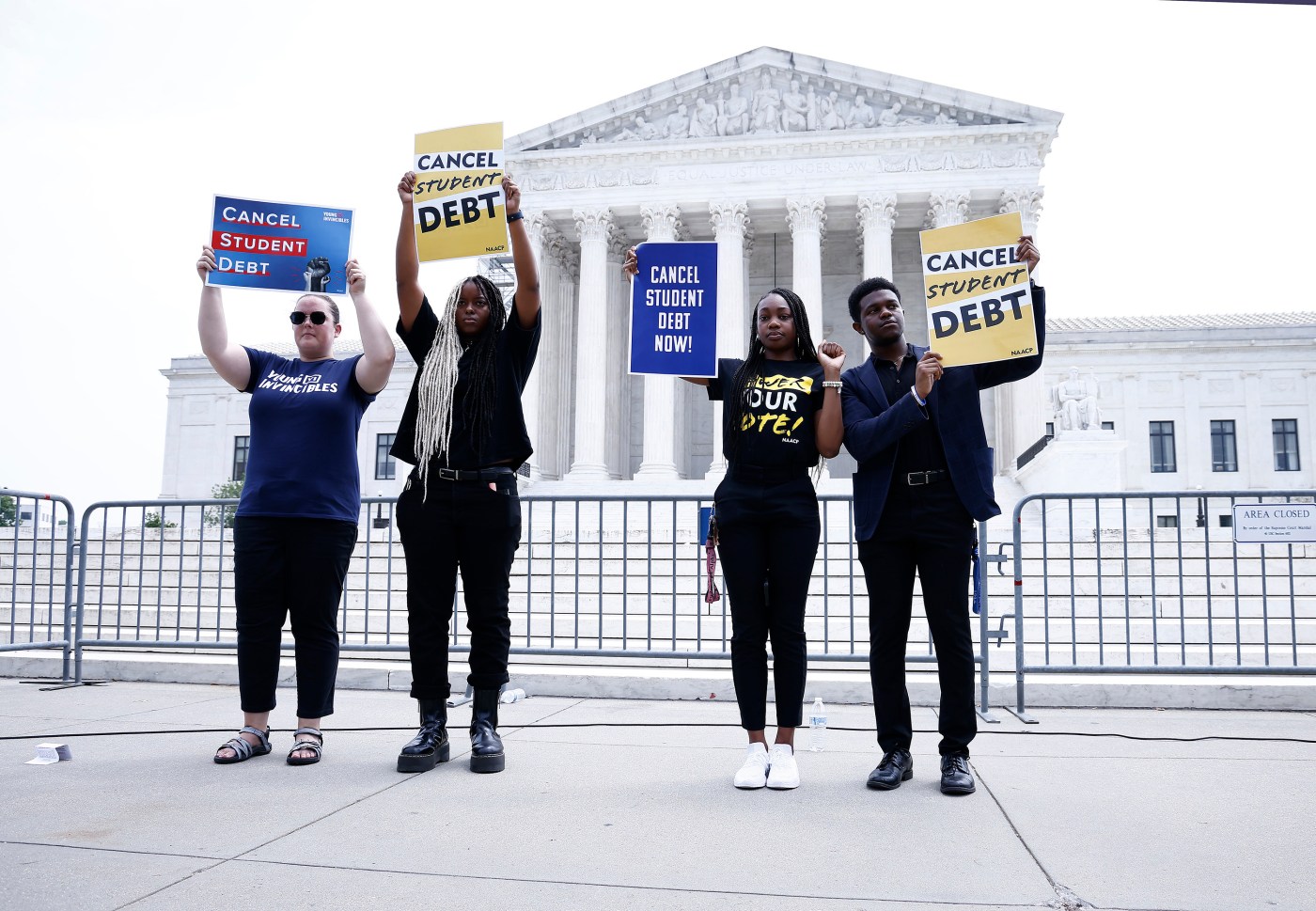
Your student loans could be fully canceled. See if you qualify under the SAVE plan
Remember the fuss about student loan payments starting back up, with new repayment programs rolling out to offset the challenges? Well, a new benefit rolling out in February promises some relief: full debt cancellation.
In October 2023, 43 million federal student loan borrowers were required to start repaying their monthly loan bills. It marked over three years since the federal government paused student loan payments as part of economic coronavirus protections. At one point in 2022, the Biden-Harris administration proposed a one-time debt cancellation to cancel up to $20,000 in federal student loan debt for eligible borrowers, but the Supreme Court blocked it in June 2023.
Since then, a federal repayment plan (formerly called REPAYE) was revamped with even stronger protections, like avoiding ballooning interest rates. But, perhaps even more important, it also included a provision that could still cancel student loan debt over time, even immediate cancellation for some.
It’s called the SAVE repayment plan, and here’s how the debt cancellation part works.
What is the SAVE income-driven repayment plan?
The Saving on a Valuable Education (SAVE) plan allows federal student loan borrowers to have a monthly student loan payment based on how much they earn. The SAVE plan is the new and improved version of the former Revised Pay As You Earn (REPAYE) plan.
According to the White House, 6.9 million borrowers are enrolled in the SAVE Plan — nearly 300,000 of those borrowers being Pennsylvanians.
Here’s a complete breakdown of what the SAVE plan is and how to enroll in it.
How does the SAVE income-driven repayment plan cancel student loan debt?
Before this new rule was enacted this year, student debt cancellation was already provided to borrowers enrolled in income-driven repayment plans like SAVE. However, complete debt cancellation would only come after 20 to 25 years for undergraduate and graduate loans, respectively.
Starting in February, under the SAVE plan, borrowers can receive full debt cancellation in as little as 10 years or 120 payments. The February rollout is not a deadline, it’s just when the student debt cancellation benefit becomes active for those eligible.
Remember: Every federal student loan borrower is eligible for the SAVE repayment program, but full debt cancellation is only available for borrowers who fall into the eligibility below.
Borrowers who initially took out $12,000 or less in federal student loans will receive full debt cancellation after 10 years of making regular payments. For students who borrowed more than $12,000, for each additional $1,000 borrowed, they’ll add one more year to the repayment period.
For example, if your original principal balance is $15,000, you will see forgiveness after 13 years of making regular payments. If the original principal balance is $20,000, your debt will be canceled after 18 years.
If you owe more than that, you will still see full debt cancellation after 20 to 25 years under the original rules of income-driven repayment plans.
Here’s the best part: If you’ve already made years of regular payments on your loans, those years count towards the debt cancellation period when you enroll in the SAVE program, according to a U.S. Department of Education spokesperson. For example, borrowers who have already made 10 years of regular payments and originally borrowed $12,000 or less are eligible to “ receive forgiveness as soon as they sign up for the plan.”
How to apply for the SAVE loan repayment plan
Apply for federal student loan repayment plans on studentaid.gov. You can also apply for repayment plans directly through your federal loan servicer like EdFinancial, MOHELA, Aidvantage, and Nelnet.
To get started, you’ll need to create an account and navigate to the income-driven repayment plan page at studentaid.gov/idr. Or visit your federal loan servicer website, create an account, and apply on their website.
Before you start, you can view each step of the enrollment process with a virtual demonstration at studentaid.gov/idr/application/demo/overview.
The application takes 10 minutes to complete and you’ll need to include:
Contact information.
Household size and number of dependents (if any).
Federal loan information. You can find this information on your studentaid.gov account and enter it manually or the application can transfer that information for you with your consent.
Financial information. Your salary, retirement plan, health insurance costs, mortgage payments, etc.
___
©2024 The Philadelphia Inquirer, LLC. Visit at inquirer.com. Distributed by Tribune Content Agency, LLC.


